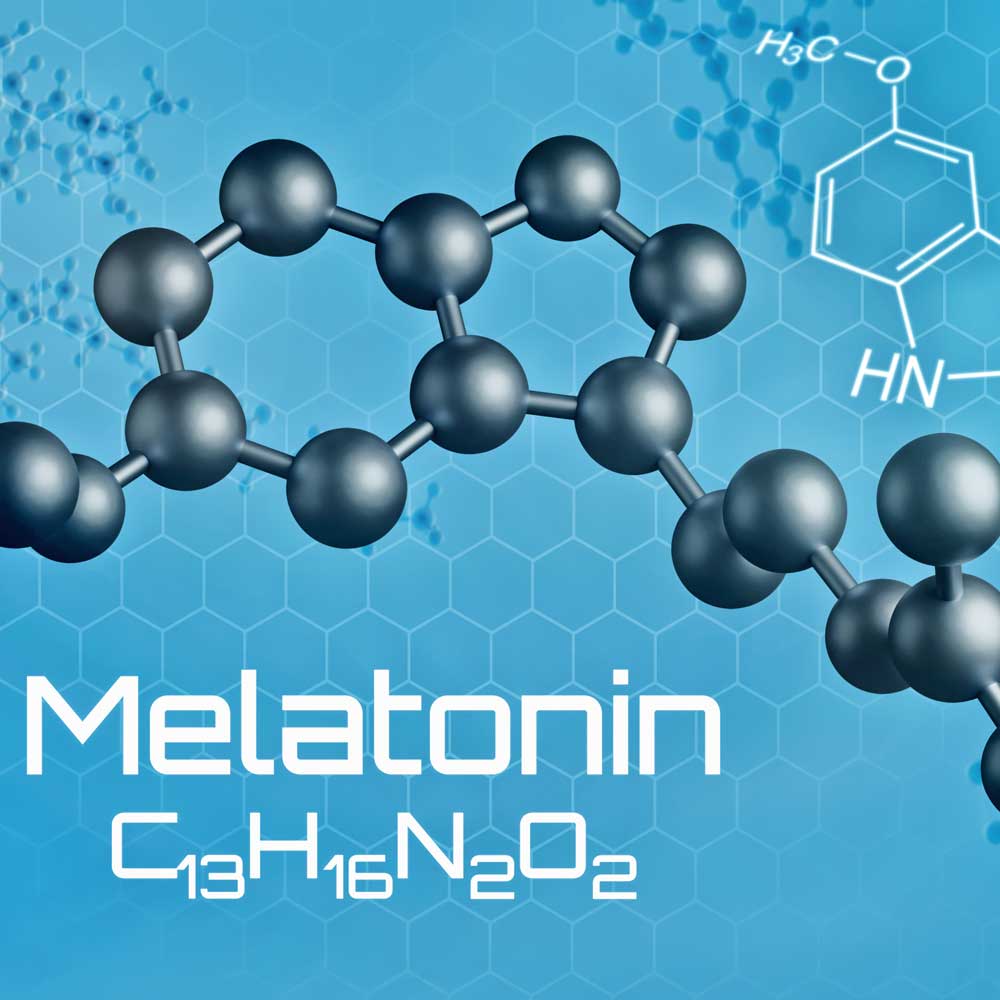Latest Facts
Medical Studies on Melatonin – Latest Facts

You want to get a fast overview on the latest research on melatonin and its multiple applications? – In this category you will find the most important studies listed separately; of course, these are also assigned to the respective subject areas.
The selection of the presented papers was made by the scientific committee of Interchron, the international forum for chronobiology, and it will be updated continuously.
Medical Studies on Melatonin – Latest Facts
Women experience increased vulnerability for both mood and sleep disorders, and the female menstrual cycle represents one fundamental mechanism related to risk.
Humans live in a 24-hour environment, in which light and darkness follow a diurnal pattern. Our circadian pacemaker, the suprachiasmatic nuclei (SCN) in the hypothalamus, is entrained to the 24-hour solar day via a pathway from the retina and synchronises our internal biological rhythms.
In this review we summarized the actual clinical data for a cardioprotective therapeutic role of melatonin, listed melatonin and its agonists in different stages of development, and evaluated the melatonin cardiovascular target tractability and prediction using machine learning on ChEMBL.
The Metabolic Syndrome is a cluster of cardio-metabolic risk factors and comorbidities conveying high risk of both cardiovascular disease and type 2 diabetes. It is responsible for huge socio-economic costs with its resulting morbidity and mortality in most countries. The underlying aetiology of this clustering has been the subject of much debate.
Unexplained infertility occurs when common causes for a couple’s inability to conceive have been excluded. Although origins of idiopathic infertility are still unclear, factors, such as an altered oxidative balance, are believed to be involved. Melatonin is an outstanding antioxidant reportedly present in the follicular fluid (FF), which has been suggested as a useful tool in the management of human fertility.
Healthy circadian rhythmicity has been suggested to relate to a better state of brain-injured patients and to support the emergence of consciousness in patient groups characterized by a relative instability thereof such as patients with disorders of consciousness (DOC).
Patients with major depressive disorder (MDD) often have circadian rhythm alteration and sleep disturbance. The pineal gland regulates the circadian rhythm and sleep by the secretion of melatonin neurohormone. However, the relationship between pineal abnormality and MDD remains elusive.
We have demonstrated previously that melatonin attenuates hepatotoxicity triggered by high doses of (-)-epigallocatechin-3-gallate (EGCG) in mice. The current work investigated the influence of melatonin on the oncostatic activity of EGCG in two cancer cell lines, wherein melatonin induced an opposite response of p21.
Our purpose is to investigate the impact of circadian and melatonin pathway genes as well as their interactions with night-shift work (NSW) on breast cancer risk in Korean women.
Melatonin, a hormone synthesized by both the pineal gland and retina, functions as an important modulator of a number of physiological functions. In addition to its rather well-established roles in the regulation of circadian rhythms, sleep, and reproduction, melatonin has also been identified as an important regulator of glucose metabolism.
The shortage of donor hearts could be alleviated with the use of the allografts from donation after circulatory death (DCD). Here, we evaluated the protective effect of melatonin on myocardial ischemia/reperfusion (MI/R) injury in a DCD heart model after ex vivo perfusion.
Melatonin has numerous anti-cancer properties reported to influence cancer initiation, promotion, and metastasis. With the need for effective hormone therapies (HT) to treat menopausal symptoms without increasing breast cancer risk, co-administration of nocturnal melatonin with a natural, low-dose HT was evaluated in mice that develop primary and metastatic mammary cancer.
Prevention of neurodegenerative diseases is presently a major goal for our Society and melatonin, an unusual phylogenetically conserved molecule present in all aerobic organisms, merits consideration in this respect.
Last year melatonin was 60 years old, or at least its discovery was 60 years ago. The molecule itself may well be almost as old as life itself. So it is time to take yet another perspective on our understanding of its functions, effects and clinical uses.
Circadian rhythms (CR) are a series of endogenous autonomous oscillators generated by the molecular circadian clock which acting on coordinating internal time with the external environment in a 24-h daily cycle.
Toll-like receptors (TLRs) are crucial activators of inflammatory responses, they are considered immune receptors.
The purpose of this review is to provide a brief summary about the current state of knowledge regarding the circadian rhythm in the regulation of normal renal function.
Daily rhythms generated by endogenous circadian mechanisms and synchronized to the light-dark cycle have been implicated in the timing of birth in a wide variety of species. Although chronodisruption (e.g., shift work or clock gene mutations) is associated with poor reproductive outcomes, little is known about circadian timing during pregnancy.
Molecular circadian clocks align daily behavioral and metabolic rhythms with the external day-night cycle. Priming energy metabolism for recurring changes on a 24-hour basis, these clocks are deeply interlinked with metabolic homeostasis and health.
Melatonin (MLT), a neuromodulator mainly acting through two G-protein coupled receptors MT1 and MT2, regulates many brain functions, including circadian rhythms, mood, pain and sleep. MLT and non-selective MT1/MT2 receptor agonists are clinically used in neuropsychiatric and/or sleep disorders.